The crankshaft has a 3-wire crank sensor as an essential component. It serves as a multifunctional tool that can measure engine RPM and the speed at which it is doing so, as well as timing the ignition.
A faulty sensor can cause a car to stall, as well as create engine resistance and boost fuel usage. It can also induce quick RPM drops [1].
Testing the crank sensor on your car can be a difficult task if you don’t know where to start. In this article, we will show you how to test the 3 wire crank sensor with a multimeter. This is a process that can help you determine if the sensor is bad or not. We will also provide some tips on how to fix it if it is bad.
Testing Methods of Multimeter
If you want to test the crankshaft sensor with a multimeter, you can use a few methods:
- The first is to check for resistance between the terminals of the sensor. If the sensor is working properly, there should be continuity between the terminals;
- You can also check for voltage at the terminals of the sensor. If there is no voltage, this indicates that the sensor is not working properly;
- Finally, you can check for an electrical signal at the terminal of the sensor. This will indicate if the sensor is sending a signal to the engine control unit. If you find that any of these tests are not working, it is likely that your crankshaft sensor needs to be replaced;
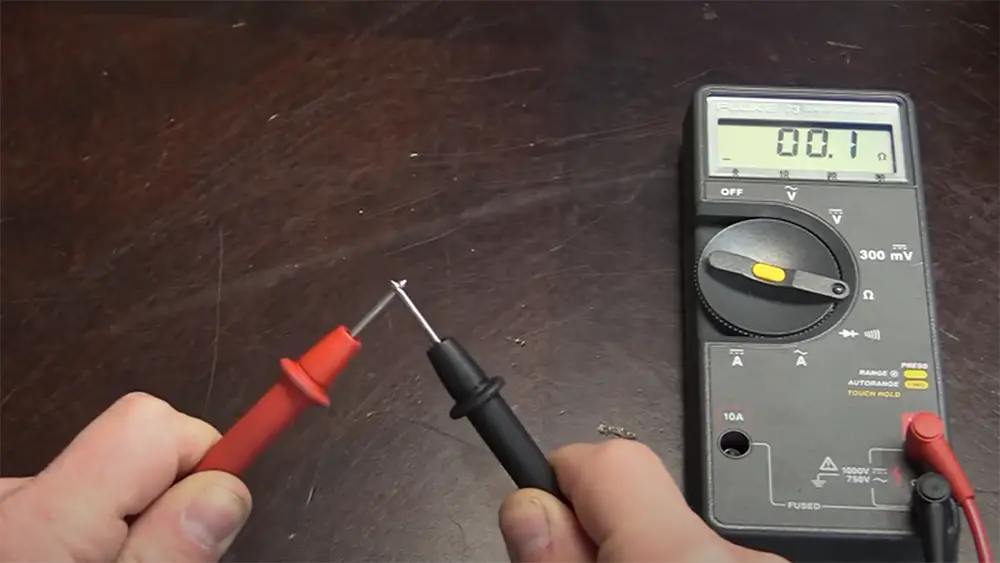
The crank sensor may be the source of your car’s problems with acceleration, performance, or engine. To determine whether the sensor is broken, it must be checked with a multimeter.
Signs Your Camshaft Position Sensor Is Failing:
1) Car Jerking and Losing Power
If the crank sensor fails, the engine may jerk or lurch during acceleration. This can also cause the engine to lose power. When the engine is under load, such as when you are accelerating, it needs more spark. If the sensor isn’t working properly, the engine may not be getting enough spark and will jerk or lurch. This can also cause a loss of power [2].
2) Transmission Locking in a Single Gear
If this happens, take extreme caution. The check engine light usually comes on just before or after your car becomes immobilized in gear. This is a serious problem that needs to be fixed right away.
3) Loss of Engine Power
A failing camshaft position sensor can cause the engine to lose power. The engine may run rough or misfire if it’s not getting enough spark. If you notice any of these signs, it’s important to take your car to a mechanic right away. A failing camshaft position sensor can cause serious problems with your engine and transmission.
4) The Check Engine Indicator Is On
The check engine light is on when something’s wrong with your car and you shouldn’t drive it anymore. If the check engine light is on, take your car to a mechanic and have him or her check it out.
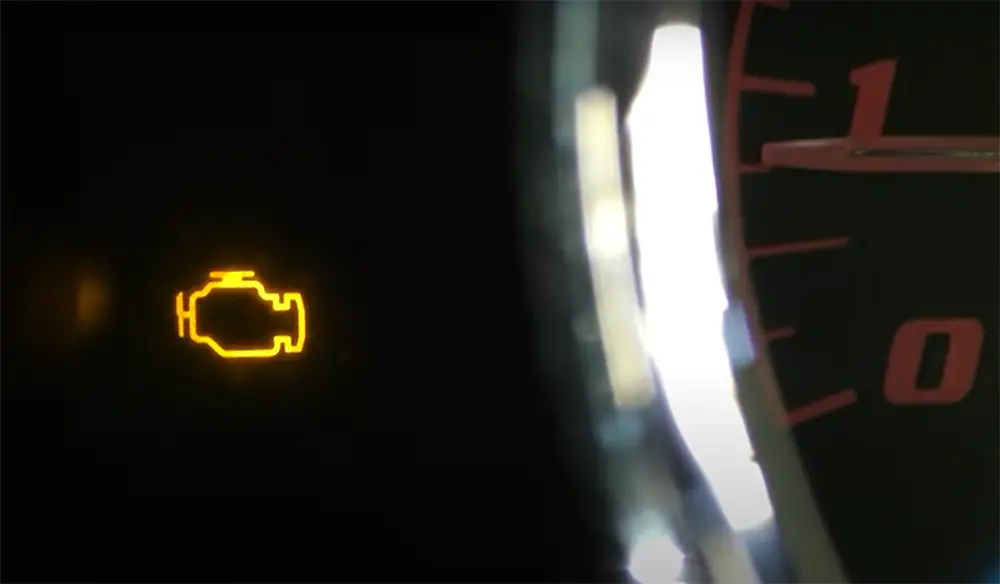
When you’re testing a three-wire crankshaft sensor with a multimeter, you’ll want to make sure that the check engine light is off. If it’s on, there may be another problem with your car that you’re not aware of.
5) Vehicle Won’t Start
If your vehicle won’t start, it may be due to a problem with the crankshaft sensor. Try testing the sensor with a multimeter to see if it is working properly.
6) Poor Acceleration
Acceleration issues can be either annoying or dangerous, depending on how severe the problem is. You and others may be put in danger if your acceleration is severely restricted. If you have an acceleration issue, it may be due to a bad crankshaft sensor.
When testing your crankshaft sensor, you should first check the wiring harness for any loose or damaged wires. If the wires are in good condition, then you can test the sensor itself with a multimeter.
7) Increased Fuel Consumption
If your car is using more fuel than usual, the camshaft position sensor may be to blame. The engine’s camshaft position sensor controls the vehicle’s fuel, timing, and ignition.
When testing the camshaft position sensor, you should first check the wiring harness for any loose or damaged wires. If the wires are in good condition, then you can test the sensor itself with a multimeter.
If you find that your car’s crankshaft or camshaft sensor is bad, it will need to be replaced as soon as possible. These sensors are essential for the proper functioning of your car’s engine.
8) Misfiring and Backfiring
If you are experiencing either of these issues, it is likely that your crank sensor has failed. A quick test with a multimeter will confirm whether the sensor is working properly or not.
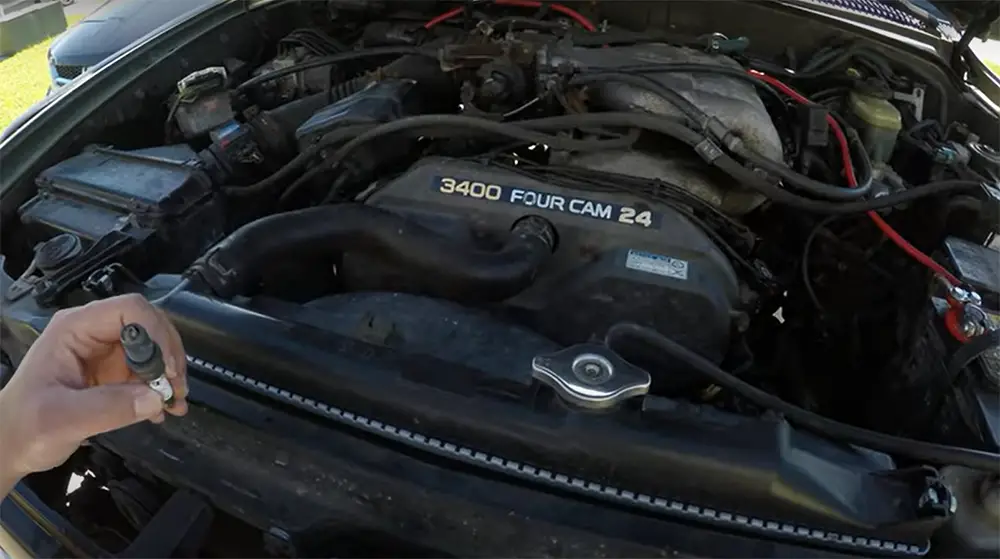
9) Hard Starting
The ECM can calculate the position of the camshaft if it gets the correct input from the crank position sensor. If the ECM does not receive a signal from the sensor, the engine may start hard or not at all.
When the engine is running, the ECM uses sensor input to make sure the cylinders are firing in the correct order. If the signal from the crank position sensor is missing or incorrect, the engine will misfire. The misfire may be hard to feel, but it will damage your catalytic converter and eventually cause engine damage.
10) Surging
When the weather is colder, you may notice surging if your car has a faulty crank sensor. This is because the engine in a vehicle is typically one of the hottest components. In cold weather, the engine will take longer to warm up. This can cause the engine to run rich or lean, depending on the problem. If the engine is running too lean, it will surge when you are trying to maintain a constant speed.
11) Stalling
If your car stalls frequently, it may be caused by a problem with the crank sensor. The most common reason for stalling is an issue with the timing belt or chain. If these components are not working correctly, they can cause the engine to stall.
12) No Spark At All
If you have no spark at all, it is most likely due to a problem with the crank sensor. This can be caused by a number of things, including a loose connection or a bad ground. If you suspect that the problem is with the crank sensor, you should check the wiring and connectors first. You may also want to check the ECM for trouble codes.
13) Poor Fuel Economy
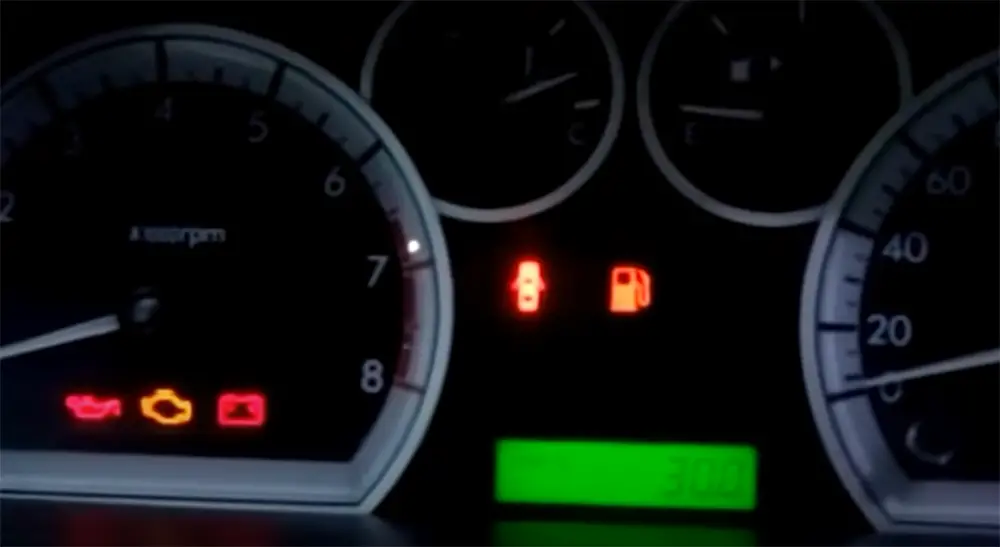
If your car’s fuel economy has decreased, it could be caused by a faulty crank sensor. When the engine is not running correctly, it can use more fuel than usual. This can be caused by a number of things, including an incorrect air/fuel mixture or timing issues. If you think that your fuel economy has decreased because of a problem with the crank sensor, you should have it checked as soon as possible.
14) No Fuel Injector Pulse
A faulty camshaft position sensor might produce a No Fuel Injector Pulse. The novice mechanic may occasionally mistake it for something else. The pulse is what tells the injectors when to squirt fuel into the engine. If there’s no pulse, there’s no injection and therefore, the engine will not start or will run very poorly if it does manage to start.
How to Test 3 Wire Crank Sensor with Multimeter:
1) Find the Position of the Wires
Determine the power, ground, and signal lines from the owner’s handbook. Prepare your multimeter for checking the 3 wire sensor now. To examine the circuit of a sensor, set it to DC volt mode [3].
2) Touch the Wires to the Multimeter
Now, touch the multimeter’s probes to the respective wires. The black probe goes to the ground while the red one goes to the power. If you see a reading of around 12 volts, it means that your sensor is getting power.
However, if there’s no voltage or a very low voltage (< 0.45 volts), check your car’s fuse box for any blown fuses. You can also use a test light in place of a multimeter for this purpose. In addition, you might be interested in how to test a fuse without a multimeter article.
3) Look into the Readings
Look at the multimeter readings and make a note of them. Now compare the data in the owner’s manual with those given in step 2. If the multimeter readings match those in the manual, it means your sensor is working fine.
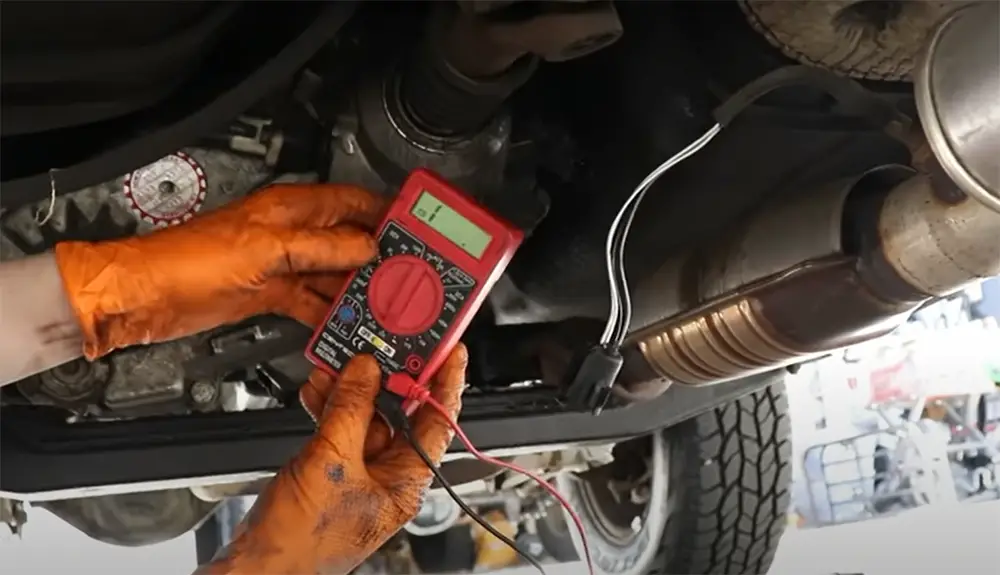
On the other hand, if there’s a discrepancy between the two sets of readings, it indicates that your sensor needs to be replaced.
4) Touch the Wires Again
Begin by asking someone to start the engine and then touch the black cable on the multimeter to the ground wire and the red cable to the signal wire. If the multimeter reading fluctuates between 0.45 volts to 0.75 volts, it means that your sensor is working as it should be.
5) Take the Readings Again
Now, have the person rev up the engine while you hold the multimeter probes in place. If you see the reading increasing with an increase in the engine speed, it means your sensor is functioning properly.
However, if the reading on the multimeter doesn’t change or remains constant, it indicates that your sensor needs to be replaced.
6) Interpret the Data
The output of a good sensor should be between 0.45 volts and 0.75 volts. If it falls outside this range, it needs to be replaced.
If you’re having trouble testing your sensor or interpreting the results, get in touch with a professional mechanic for help. They’ll be able to quickly diagnose any issues with your crankshaft position sensor and recommend the best course of action.
How to Test 3 Wire Crank Sensor with a Multimeter
The table below provides a comparison of various indicators when testing a 3-wire crank sensor using a multimeter. A 3-wire crank sensor is commonly found in many vehicles and is responsible for providing information about the engine’s position and speed to the engine control module (ECM).
| Indicator | Normal Reading | Abnormal Reading | Possible Issue |
|---|---|---|---|
| Resistance (Ohms) | 500 – 1000 | Out of Range | Faulty Sensor |
| AC Voltage (mV) | 50 – 200 | No Output | Open Circuit |
| Frequency (Hz) | 5 – 10 Hz (Cranking) | No Signal | Wiring Issue |
| Duty Cycle (%) | Between 30% – 90% | 0% or 100% | ECM or Wiring Issue |
Explanation:
- Resistance (Ohms): A healthy 3-wire crank sensor should read between 500 to 1000 Ohms. If the multimeter shows readings outside this range, it indicates a faulty sensor that needs replacement.
- AC Voltage (mV): When the engine is cranked, the crank sensor should produce an AC voltage output ranging from 50 to 200 millivolts. If there is no output at all, it suggests an open circuit in the sensor’s wiring.
- Frequency (Hz): During cranking, a functional crank sensor generates a frequency signal between 5 to 10 Hertz. If there is no signal detected, it indicates a wiring issue between the sensor and the ECM.
- Duty Cycle (%): The duty cycle represents the percentage of time the sensor’s signal is high during one complete revolution of the crankshaft. A healthy sensor typically has a duty cycle between 30% to 90%. If the reading shows either 0% or 100%, it points to a potential issue with the ECM or its wiring.
When testing a 3-wire crank sensor with a multimeter, it’s essential to compare the obtained readings with the specified normal ranges to identify any potential problems with the sensor or its associated components.
Check useful more guides about multimeters:
- How to Test an ECU With a Multimeter?
- How to Test a CDI Box With a Multimeter?
- Multimeter vs. Oscilloscope
FAQ
How do you test a 3-pin camshaft sensor?
There are a few different ways that you can test a three-wire camshaft position sensor.
One way is to use a multimeter. To test the sensor with a multimeter, you’ll first want to disconnect the negative battery cable. Once the battery cable is disconnected, locate the camshaft position sensor. The sensor is usually located near the engine’s crankshaft pulley or on the side of the cylinder head [4].
Once you’ve found the sensor, remove its electrical connector and probe the exposed wires with your multimeter. With your multimeter set to Ohms mode, place one lead on each of the exposed wires and check for continuity. The resistance between these two wires should be very low, close to 0 Ohms. If the resistance is anything other than 0 Ohms, then the sensor is most likely faulty and will need to be replaced.
Another way to test a three-wire camshaft position sensor is with an oscilloscope. This method is a little more complex and requires special equipment, but it can give you a more accurate reading of the sensor’s output signal.
How do you test a GM crankshaft position sensor?
You can perform a few tests on your GM crankshaft position sensor with a multimeter. The first is to check for continuity between the ground and power terminals. You should see a reading of 0 ohms if the sensor is working properly.
Next, you’ll want to test the resistance between the signal and ground terminals. This reading should be between 700 and 3000 ohms.
Finally, you can test the output voltage of the sensor by connecting the positive lead of your multimeter to the signal terminal, and the negative lead to the ground. With the engine off, you should see a reading of around 0 volts. When cranking the engine, this voltage should increase to around 12 volts. If it doesn’t, the sensor is likely faulty.
If you suspect that your GM crankshaft position sensor is failing, it’s best to replace it as soon as possible. A faulty sensor can cause all sorts of engine performance issues, and may even prevent the engine from starting [5].
How many ohms should a camshaft sensor have?
Set your multimeter to Ohms and touch the meter leading to the sensor terminal pins. If there is infinite resistance, the sensor is open and needs to be replaced. Some models offer a resistance value of between 200 and 900 ohms. Consult your repair manual for more information [6].
How much resistance should a crank sensor have?
If the internal resistance value is 200 to 1,000 ohms (depending on the reference value), the sensor is functioning properly. There is a short circuit if the value is 0 ohms, and an interruption occurs when M Ohms is reached.
What equipment do I need to test a 3-wire crank sensor with a multimeter?
To test a 3-wire crank sensor with a multimeter, you’ll need a digital multimeter capable of measuring resistance and voltage, the vehicle’s repair manual for reference, safety gloves, and protective eyewear.
Can I test a 3-wire crank sensor without removing it from the vehicle?
Yes, you can perform a basic test without removing the crank sensor from the vehicle. However, for more accurate results and in-depth testing, it’s recommended to detach the sensor from the engine.
How do I identify the wires on a 3-wire crank sensor?
To identify the wires on a 3-wire crank sensor, you can consult the vehicle’s repair manual or use a wiring diagram for your specific vehicle make and model. Generally, the three wires are for power supply, ground, and signal output.
What should I set my multimeter to when testing a crank sensor?
When testing a crank sensor for resistance, set your multimeter to the “Ohms” or “Resistance” mode. For voltage testing, use the “Volts” mode, and ensure it is set to an appropriate range higher than the expected voltage output.
How do I test the resistance of a 3-wire crank sensor with a multimeter?
To test the resistance of a 3-wire crank sensor, disconnect it from the vehicle’s electrical system, set your multimeter to the “Ohms” or “Resistance” mode, and then connect the multimeter probes to the appropriate terminals of the sensor. Compare the measured resistance with the specifications provided in the repair manual.
How do I check the signal output of a 3-wire crank sensor with a multimeter?
To check the signal output of a 3-wire crank sensor, you will need a helper to crank the engine while you measure the voltage. Set your multimeter to the “Volts” mode, connect the positive probe to the signal wire and the negative probe to the ground wire. Crank the engine and observe the voltage fluctuations on the multimeter. Consult the repair manual for the expected voltage range.
What does it mean if my 3-wire crank sensor has no resistance reading?
If your 3-wire crank sensor shows no resistance reading or an infinite resistance value (open circuit), it likely indicates a faulty sensor. In such cases, it’s best to replace the sensor with a new one.
My 3-wire crank sensor fails the resistance and voltage tests. What should I do next?
If your 3-wire crank sensor fails the resistance and voltage tests, it is probably defective and should be replaced. Before doing so, double-check your testing procedures and ensure all connections are secure. If the new sensor still doesn’t solve the issue, consider seeking assistance from a qualified mechanic to diagnose any other potential problems.
Useful Video: How To Test Camshaft Or Crankshaft Position Sensor With Multimeter An Easy Way To Check Good Or Bad.
References:
- https://carfromjapan.com/article/car-maintenance/how-to-test-3-wire-crank-sensor-with-multimeter/
- https://eaglesgarage.com/how-to-test-3-wire-crank-sensor-with-multimeter/
- https://carfromjapan.com/article/car-maintenance/how-to-test-3-wire-crank-sensor-with-multimeter/
- https://dannysengineportal.com/crankshaft-camshaft-position-sensor-testing-done-the-easy-way/
- https://www.leonieclaire.com/trending/how-do-you-test-a-gm-crankshaft-position-sensor/
- https://axleaddict.com/auto-repair/Camshaft-Position-Sensor-Test





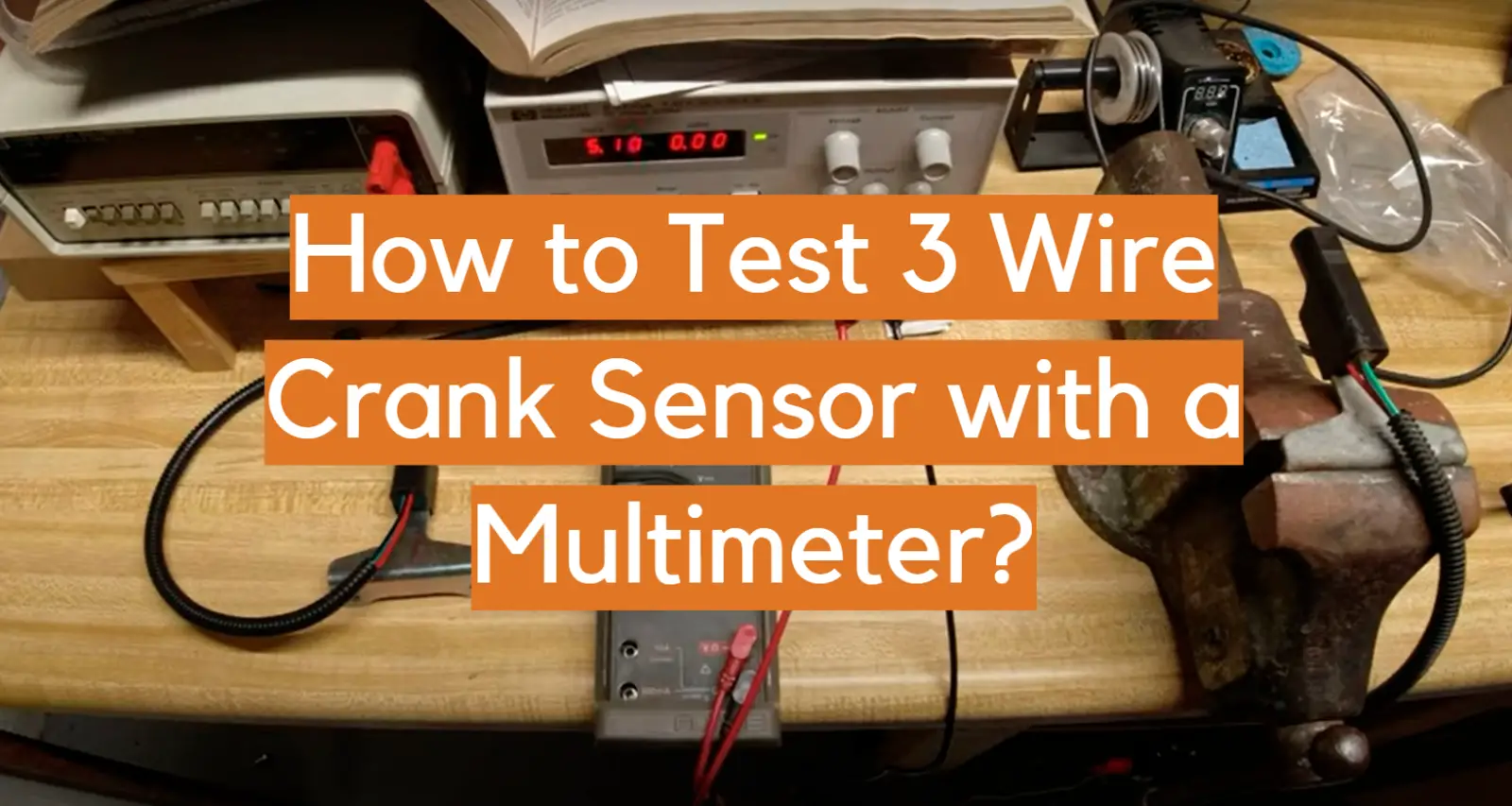








Leave a Reply